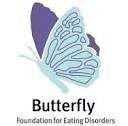- Calls to this hotline are currently being directed to Within Health, Fay or Eating Disorder Solutions
- Representatives are standing by 24/7 to help answer your questions
- All calls are confidential and HIPAA compliant
- There is no obligation or cost to call
- Eating Disorder Hope does not receive any commissions or fees dependent upon which provider you select
- Additional treatment providers are located on our directory or samhsa.gov
Effective Responses to the Body Image Crisis in Australia

Contributor: Courtney Howard, B.A., Executive Assistant at Eating Disorder Hope and Addiction Hope
Negative body image is an issue so widespread that it has become an epidemic, severely impacting the mental and physical health of those who grapple with it. Australia has a particularly high prevalence of body image issues and body dissatisfaction. The Australian government and non-profit organizations are doing their part to answer the call to action for increased resources and changing attitudes toward body image throughout the country.
Body Image & Eating Disorders
A 2010 study [1] found that 28 percent of Australian males ages 11-24 feel dissatisfied with their appearance. The same is true of 35 percent of Australian females. According to the National Eating Disorders Collaboration, eating disorders are believed to affect around 9 percent of Australians. This is a significant statistic proving that the high rates of body dissatisfaction should not be ignored.
Body image issues and eating disorders often co-occur, but you do not have to have a full-blown eating disorder to struggle with body image. Even if what triggers an eating disorder might not have anything to do with body image, these issues invariably come up as an individual’s self-worth becomes dependent on disordered food behaviors and weight. In fact, some professionals argue that body image is the last lingering piece of the puzzle when it comes to eating disorder recovery.
National Strategy on Body Image
The national government of Australia has taken proactive steps to combat body image issues among its population. A National Advisory Group drafted a proposed National Strategy on Body Image [2] in 2009, which details recommendations for government action in this regard. These include a new, standardized sizing system for clothing companies and educating both staff and students on body image awareness in schools.
 This latter recommendation targeted toward youth and school outreach is vital to the cause. The Mission Australia Youth Survey 2015 [3], which sampled nearly 19,000 adolescents ages 15 to 19, reports that 25 percent of adolescents in Australia identify body image as a top personal concern. Instilling ideals of body positivity, self-acceptance, and intuitive eating at an early age has the power to decrease rates of eating disorders among adolescents and bring forth a generation of change.
This latter recommendation targeted toward youth and school outreach is vital to the cause. The Mission Australia Youth Survey 2015 [3], which sampled nearly 19,000 adolescents ages 15 to 19, reports that 25 percent of adolescents in Australia identify body image as a top personal concern. Instilling ideals of body positivity, self-acceptance, and intuitive eating at an early age has the power to decrease rates of eating disorders among adolescents and bring forth a generation of change.
The proposed National Strategy on Body Image also recommended that the government develop a strategy “…to provide a holistic approach to the use of the internet as a means of promoting positive body image messages and resources.” This pertains to the media, but also suggests a government-funded initiative to combat thinspiration sites, otherwise known as “pro-ana” or “pro-mia” communities.
These websites are often intentionally triggering, going as far as to promote disordered eating and related tips to achieve the painfully thin ideal for which so many with eating disorders strive. It would be difficult for the government to have much control over these communities, but raising awareness of the dangers they pose and promoting body positive alternatives could have a profound effect on those most at risk for the development of eating disorders.
Additional Efforts to Address Body Image
In September 2015, The Butterfly Foundation, one of Australia’s largest eating disorder organizations and advocacy groups, launched its first “Love Your Body Week” in conjunction with Sportsgirl, an Australia-based clothing line. This occurred during Body Image and Eating Disorder Awareness Week (BIEDAW), an existing nationwide initiative to promote awareness for eating disorders and body image issues.
 The aim of “Love Your Body Week,” according to The Butterfly Foundation, is “… to promote body confidence in all Australians by celebrating body diversity.” As Christine Morgan, CEO of The Butterfly Project, explained to The Huffington Post Australia, “It’s about celebrating your body for what it can do, not what it looks like.” Identifying and appreciating your body’s functionality over appearance is a reframing tool often implemented to boost body image and acceptance among those in eating disorder recovery.
The aim of “Love Your Body Week,” according to The Butterfly Foundation, is “… to promote body confidence in all Australians by celebrating body diversity.” As Christine Morgan, CEO of The Butterfly Project, explained to The Huffington Post Australia, “It’s about celebrating your body for what it can do, not what it looks like.” Identifying and appreciating your body’s functionality over appearance is a reframing tool often implemented to boost body image and acceptance among those in eating disorder recovery.
The Body Image Movement is another valuable resource in Australia for those struggling with poor body image. Founded by Taryn Brumfitt, a mother and body image activist, this organization aims to shift cultural definitions of what is beautiful. Brumfitt spearheads this initiative through interactive workshops, e-books, and her popular blog. Embrace, a new documentary by Brumfitt funded through Kickstarter, is set to release later this year.
Though there is a great need for resources within Australia, government officials, non-profit organizations, and local advocates are all answering this call. In addition to these resources, there are many treatment centers throughout the country that provide various levels of care to those in need of eating disorder treatment. If your body image struggles have developed into disordered eating, reach out for help today.
Community Discussion – Share your thoughts here!
 About the Author: Courtney Howard is the Executive Assistant for Eating Disorder Hope and Addiction Hope. She graduated summa cum laude with a B.A. from San Diego State University, holds a paralegal certificate in Family Law, and is a Certified Domestic Violence Advocate. After obtaining her certification as a life coach, Courtney launched Lionheart Eating Disorder Recovery Coaching in 2015 and continues to be a passionate advocate for awareness and recovery.
About the Author: Courtney Howard is the Executive Assistant for Eating Disorder Hope and Addiction Hope. She graduated summa cum laude with a B.A. from San Diego State University, holds a paralegal certificate in Family Law, and is a Certified Domestic Violence Advocate. After obtaining her certification as a life coach, Courtney launched Lionheart Eating Disorder Recovery Coaching in 2015 and continues to be a passionate advocate for awareness and recovery.
References:
[1]: The National Eating Disorders Collaboration. (2010). “Eating Disorders Prevention, Treatment & Management: An Evidence Review,” retrieved from http://www.nedc.com.au/nedc-publications.[2]: (2009). “National Strategy on Body Image,” Commonwealth of Australia.
[3]: Cave, L., Fildes, J., Luckett, G. and Wearring, A. (2015). “Mission Australia’s 2015 Youth Survey Report,” Mission Australia.
The opinions and views of our guest contributors are shared to provide a broad perspective of eating disorders. These are not necessarily the views of Eating Disorder Hope, but an effort to offer discussion of various issues by different concerned individuals.
We at Eating Disorder Hope understand that eating disorders result from a combination of environmental and genetic factors. If you or a loved one are suffering from an eating disorder, please know that there is hope for you, and seek immediate professional help.
Last Updated & Reviewed By: Jacquelyn Ekern, MS, LPC on July 25, 2016
Published on EatingDisorderHope.com

The EatingDisorderHope.com editorial team comprises experienced writers, editors, and medical reviewers specializing in eating disorders, treatment, and mental and behavioral health.

